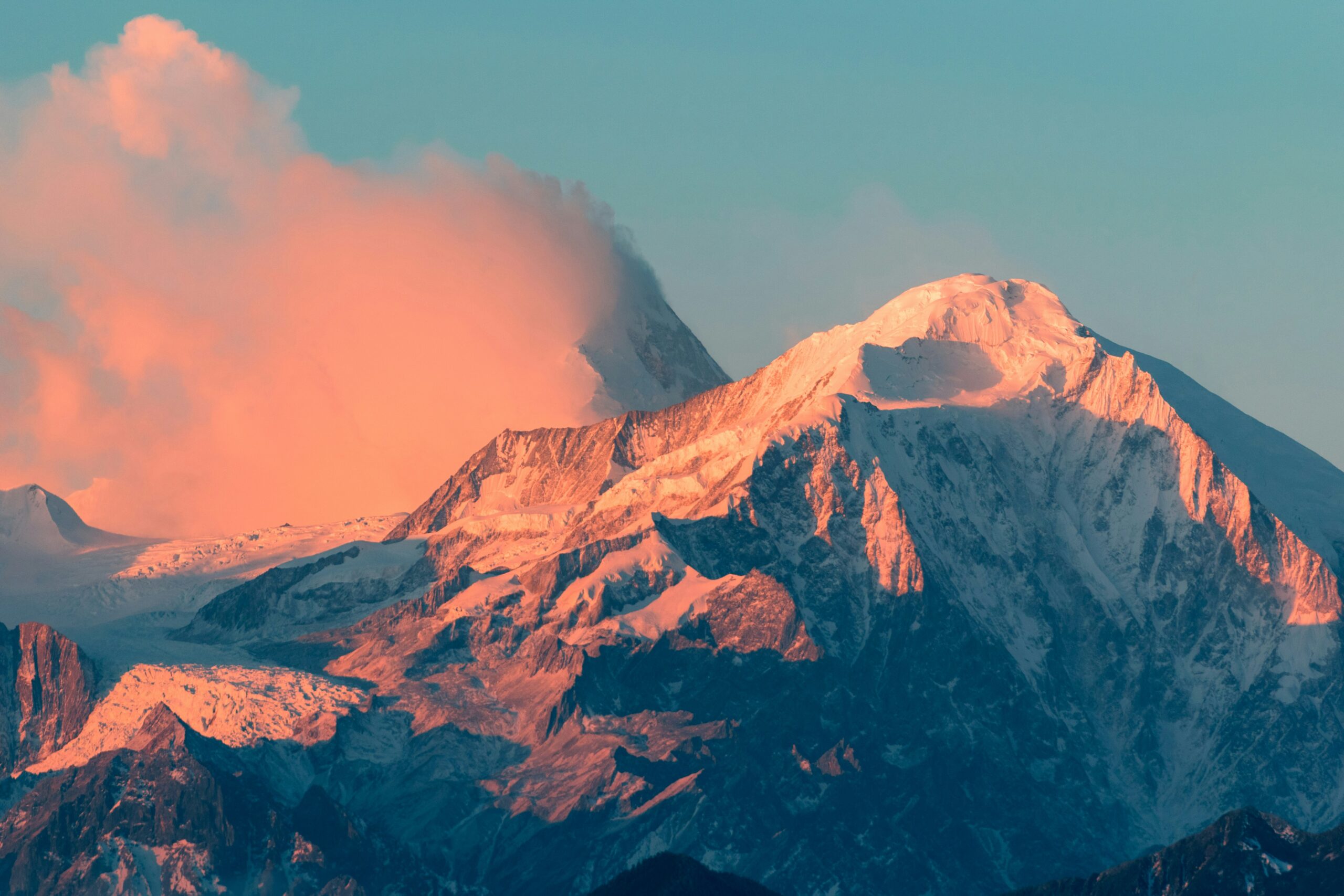Imagine the thrill of embarking on a breathtaking journey, where towering snow-capped peaks and awe-inspiring natural beauty surround you. One question that may stir curiosity within you is whether it is possible to drive to the magnificent summit of Mount Shasta. With its majestic allure and imposing height, Mount Shasta has captured the imagination of many adventurous souls. In this article, we will explore whether ascending to the very top of this mighty mountain by car is an achievable feat or something reserved for only the most intrepid explorers.

Understanding Mount Shasta
Mount Shasta is a majestic peak located in northern California, standing at an impressive height of 14,179 feet (4,322 meters). It is situated in the southern end of the Cascade Range, near the border of California and Oregon. The mountain is known for its striking beauty, with its snow-capped summit and picturesque surroundings. Mount Shasta holds great significance not only for its natural beauty but also for its historical and cultural importance.
Location and geography of Mount Shasta
Mount Shasta is situated in Siskiyou County, California, and its peak is visible from miles away. The mountain itself is considered a stratovolcano, characterized by its steep, symmetrical cone shape. It stands as the second-highest peak in the Cascade Range, after Mount Rainier in Washington.
History and cultural significance of Mount Shasta
For centuries, Mount Shasta has been an important location for various Native American tribes, including the Shasta, Karuk, and Wintu. These tribes consider the mountain to be sacred, associating it with spiritual and cultural significance. Mount Shasta also gained popularity during the California Gold Rush in the mid-1800s, attracting many adventurers and settlers to the region. Today, it continues to draw countless visitors who are captivated by its charm and rich history.
Reaching the Mountain: Access and Roads
If you are planning a visit to Mount Shasta, it is important to know the main access routes to the mountain. Interstate 5 provides the most direct and convenient access, with various exit points leading towards the mountain. The closest towns with services and amenities include Mount Shasta City to the northwest and Weed to the south.
Main roads to Shasta
To reach Mount Shasta, take the appropriate exit from Interstate 5 and follow the signs to the designated road. Depending on your starting point, you may be directed to State Route 89, which takes you through the town of McCloud and offers breathtaking scenic views along the way. Another common route is State Route 97, which connects with Oregon and provides access to the eastern side of the mountain.
Off-road vehicle restrictions and regulations
While driving to Mount Shasta is popular and feasible, it is essential to be aware of the restrictions and regulations concerning off-road vehicles. Off-road driving is strictly prohibited on the mountain, and vehicles must stick to designated roads and parking areas. This restriction aims to preserve the natural environment and prevent damage to delicate ecosystems. It is important to respect and follow these regulations to ensure the longevity of Mount Shasta's beauty.
The Reality of Driving to the Summit
Driving to the summit of Mount Shasta is not permitted due to safety concerns and ecological preservation efforts. The road leading to the summit is steep, treacherous, and unpaved, making it ill-suited for regular vehicles. Moreover, allowing unrestricted access to the summit would pose a risk to both visitors and the fragile ecosystem of the mountain. As such, the restrictions on driving to the summit are in place to protect the natural surroundings while ensuring visitor safety.
Driving restrictions and limitations
If you wish to explore Mount Shasta by vehicle, it is important to understand the driving restrictions and limitations. While driving is allowed on designated roads, there are specific restrictions in terms of speed limits and parking areas. Be sure to adhere to these regulations to ensure a safe and enjoyable experience. Additionally, be prepared for challenging driving conditions, particularly during winter when snow and ice can make the roads treacherous.
Reasons behind the restrictions
The restrictions imposed on driving to the summit of Mount Shasta are motivated by the need to protect the delicate ecosystems that exist at higher elevations. The alpine environment is home to fragile plant and animal species that are easily disturbed and impacted by human presence. By limiting access to the summit and encouraging visitors to explore the mountain on foot, the natural balance of Mount Shasta can be preserved, ensuring its beauty for generations to come.
Climbing Mount Shasta: An Alternative
While you cannot drive to the summit, an exhilarating alternative is to climb Mount Shasta on foot. Climbing the mountain requires proper preparation, permits, and adherence to safety guidelines.
Permits and requirements for climbing
Before embarking on a climb, it is crucial to obtain the necessary permits. The climbing season typically begins in late spring and extends into early fall, but this may vary depending on weather conditions. Permits can be obtained from the appropriate authorities to ensure safe and responsible climbing practices. Furthermore, climbers are required to register and pay a fee, which helps support conservation efforts and provides essential information for search and rescue operations if needed.
Safety precautions while climbing
Climbing Mount Shasta is a challenging endeavor that should not be taken lightly. It is essential to be adequately prepared by having the right gear, including proper clothing, navigation tools, and camping equipment. Mountaineering experience and physical fitness are highly recommended to ensure a safe and successful climb. Additionally, monitoring weather conditions and being aware of potential hazards such as avalanches are crucial to minimizing risks.

What to Expect at the Summit
Reaching the summit of Mount Shasta is a rewarding experience, providing breathtaking views and a sense of accomplishment. However, it is important to be prepared for the conditions that await you at the peak.
Weather conditions at the summit
At the summit of Mount Shasta, the weather can be unpredictable and challenging. Even during the summer months, temperatures can drop significantly, and strong winds can make the conditions harsh. It is advisable to dress in layers, carry appropriate gear, and be prepared for sudden changes in weather patterns. It is also important to note that snow can persist on the mountain year-round, so proper footwear and equipment for icy conditions are essential.
View and experiences from the peak
The view from the summit of Mount Shasta is truly awe-inspiring. On a clear day, you can see panoramic vistas that stretch for miles, including other striking peaks in the Cascade Range. The sense of accomplishment and the serenity of the surroundings make the experience one that will be remembered for a lifetime. Take time to embrace the beauty, capture photos, and reflect on the natural wonders that surround you.
Mount Shasta's Base Camps
Base camps at Mount Shasta provide essential services and facilities for climbers and visitors alike. These camps serve as starting points for hikes and climbs, offering a range of amenities to enhance the overall experience.
Camping locations and requirements
There are several camping locations available at Mount Shasta, catering to both tent camping and RV camping. These campsites often have designated areas where visitors can set up their tents or park their RVs. It is crucial to adhere to the camping regulations and guidelines to ensure a positive experience for all. Campfires may be restricted, so it is important to check the current regulations and be mindful of fire safety precautions.
Services and facilities available at base camps
Base camps at Mount Shasta typically provide amenities such as restroom facilities, potable water, picnic areas, and hiking trails. Some campsites may also offer additional services, such as camp stores or rental equipment. These facilities are designed to enhance visitor comfort and convenience while respecting the natural environment. Remember to leave the campsites clean and tidy, respecting the “leave no trace” principles.

Guided Tours to the Summit
If embarking on a climb independently seems intimidating, guided tours to the summit of Mount Shasta present an excellent alternative. These tours provide expert guidance and support, ensuring a safe and memorable experience.
Availability and costs of guided tours
Guided tours to the summit of Mount Shasta are available through various outdoor adventure companies. These tours are typically offered during the climbing season and may have limited availability. It is advisable to book in advance to secure a spot. The costs of guided tours vary depending on the duration, level of support, and additional services included. However, the investment is well worth it, as experienced guides can provide valuable insights and enhance safety throughout the climb.
What the tours include
Guided tours to the summit of Mount Shasta typically include comprehensive safety orientations, equipment rentals, guiding services, and necessary permits. Experienced guides who are well-versed in the challenges of climbing Mount Shasta can navigate the best routes, provide instruction on mountaineering techniques, and offer support throughout the journey. Opting for a guided tour allows you to focus on the experience while minimizing the logistics and potential risks associated with climbing independently.
Wildlife and Flora at Mount Shasta
Mount Shasta is home to a diverse array of wildlife and flora, each contributing to the vibrant ecosystem that exists in the region.
Commonly seen animals and plants
Visitors to Mount Shasta may encounter a variety of animals, including marmots, pikas, black bears, and various bird species. The mountain is also known for its rich vegetation, with wildflowers, coniferous trees, and alpine plants dotting the landscape. Observing these creatures and plants in their natural habitat can be a delightful part of your Mount Shasta experience.
Endangered species and conservation efforts
Mount Shasta supports several endangered species, including the peregrine falcon and the wolverine. It is critical to respect their habitats and minimize disturbances that may further endanger these species. Conservation efforts, including habitat restoration and public education, play a crucial role in protecting these endangered species and ensuring their survival for future generations to appreciate.
Safety Considerations during the Visit
While exploring Mount Shasta, it is essential to prioritize safety and be aware of potential hazards that may arise.
Emergency services in the area
In case of an emergency, it is crucial to know the available emergency services in the area. Siskiyou County has search and rescue teams that can provide assistance if needed. However, always remember that prevention is the best approach. Be prepared, follow safety guidelines, and inform others of your plans before embarking on any outdoor activity.
Potential hazards and how to avoid them
Mount Shasta presents various potential hazards, including avalanches, falling rocks, and sudden changes in weather conditions. Keeping an eye on weather forecasts, practicing avalanche safety protocols, and being familiar with the terrain will help minimize these risks. Additionally, staying hydrated, using sunscreen, and taking regular breaks during hikes and climbs are essential to prevent physical exhaustion.
Conclusion: Experience Mount Shasta Responsibly
As you plan your visit to Mount Shasta, it is important to approach the experience with responsibility and respect for nature and local regulations.
Respecting nature and local regulations
When exploring Mount Shasta, be mindful of the fragile ecosystems and the wildlife that call this mountain home. Avoid littering and adhere to the “leave no trace” principles, which emphasize leaving the natural environment as you found it. Respect any signage and instructions provided by park authorities to preserve the mountain's natural beauty and cultural significance.
Leaving no trace principles
The “leave no trace” principles serve as a guide to responsible outdoor exploration. They include concepts such as disposing of waste properly, minimizing campfire impacts, respecting wildlife, and staying on designated trails. By following these principles, you can contribute to the preservation of Mount Shasta and ensure that future visitors can also enjoy its wonders.
In summary, while driving to the summit of Mount Shasta is not permitted, there are alternative ways to experience this extraordinary mountain. Whether you choose to climb to the summit, explore the base camps, or join a guided tour, you will be rewarded with breathtaking views, a rich natural environment, and a sense of adventure. Remember to plan ahead, respect the regulations and guidelines, and always prioritize safety. By doing so, you can fully immerse yourself in the beauty of Mount Shasta while leaving a minimal impact on the environment. Enjoy your journey to this magnificent mountain and embrace the wonders that await you.

